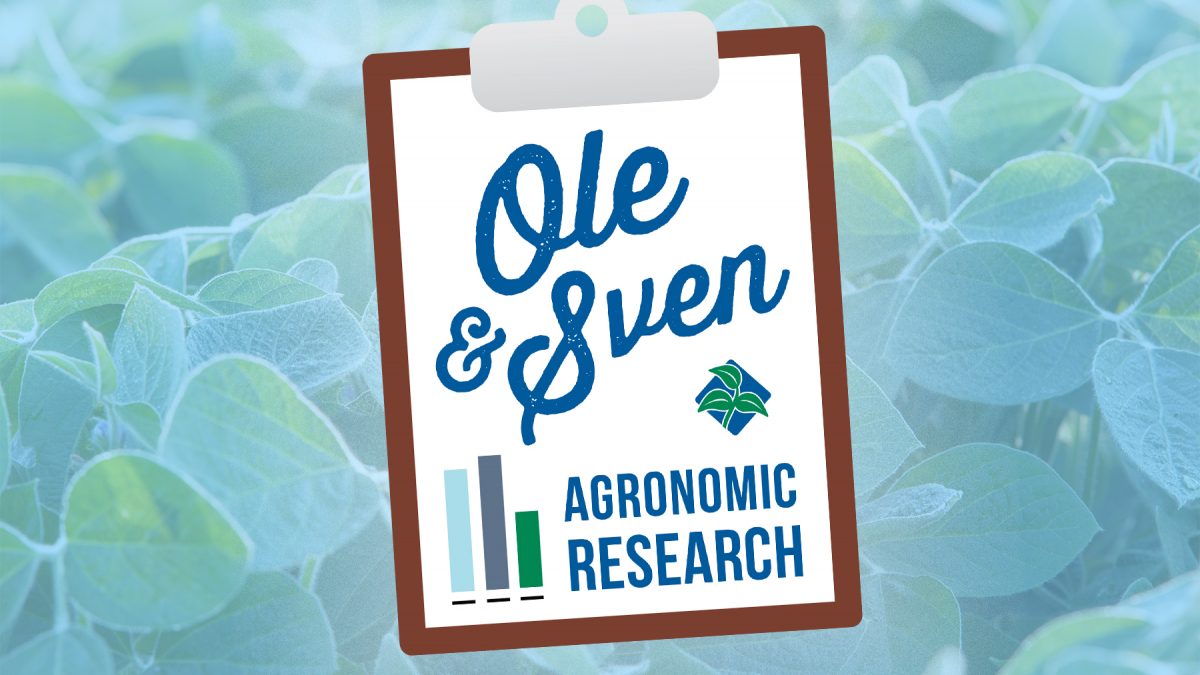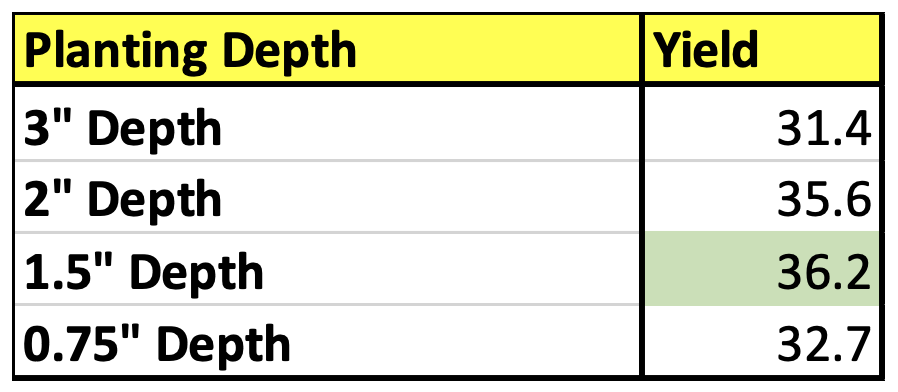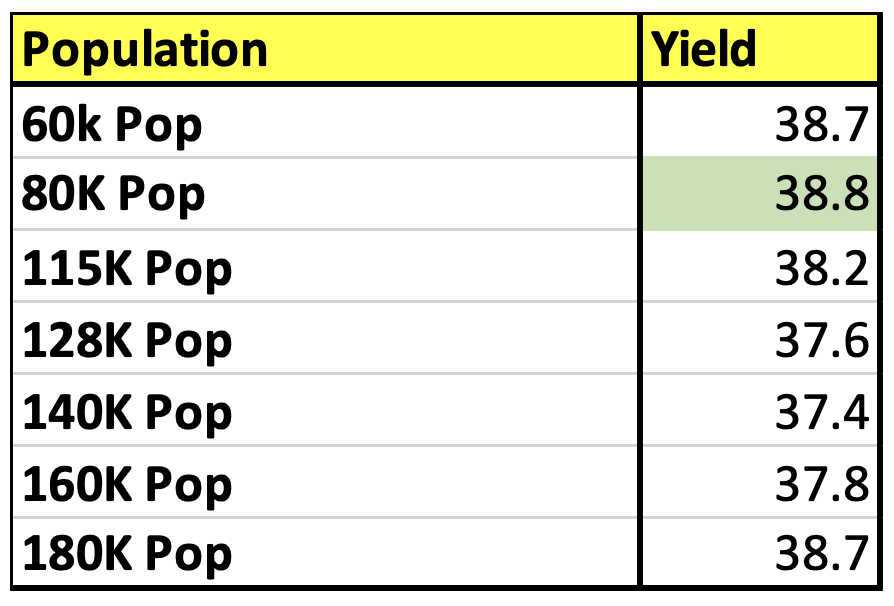The Results Are In: 2021 Ole and Sven Soybean Research

Ole and Sven Yield Results: Soybeans
At the beginning of October, I fired up the old Case 2388 and set out to harvest the Ole and Sven Soybean plot, carefully running each trial through the combine and weighing it out load by load.
Ninety loads later, we had a pile of data to sift through from a year that was one of the most challenging on record.
There are many takeaways from these trials, but I want to focus my comments on two studies: Planting Depth and Planting Population.
These two trials have been a talking point all summer. With last spring’s dry conditions, many fields planted at 1” or shallower had spotty emergence. The lack of moisture left a lot of beans sitting in dry dirt waiting for rain.
Then for the plants that did emerge, a sweeping frost welcomed them and, in many cases, caused enough damage to require a replant. Thankfully, our Ole and Sven plot didn’t see enough frost damage to require replanting, but these beans did struggle through the cold, dry spring, leaving us with plenty to reflect on as we watched them mature to harvest.
Planting Depth
We’ve mentioned our depth trial many times this summer. Its visual comparison between varying planting depths found popularity on social media and was a key talking point at our Field Day this summer. With the crop now harvested, I can confirm that the visual differences we saw in planting depths accurately reflected how the plants yielded.

Historically we have seen soybeans planted just under 1” deep yield 2 bu. more than those at 1½”. However, on a year as dry as this one, we saw just how important it is to find that moisture line and plant into it. This year, placing the seed at 1½” gave us a 3½ bu. advantage over the ¾” planted seed.
In addition to the yield boost, we also saw a significant difference in weed pressure. With the late and variable emergence of the ¾” planted soybeans, weeds had room to establish early and cause problems all summer.. In contrast, the 1½” soybeans had minimal weed pressure with an early closing canopy.
All in all, the best way to set yourself up for the highest-yielding soybean crop is to pay attention to the planting depth. Don’t automatically use the depth that has worked in the past. Instead, use the depth that suits current year conditions.
Planting Population
As I mentioned, our plot saw some frost early in the spring but not enough to cause any real concerns. Our actual population was in the ballpark of the planting population, so I don’t want to make any comparisons with an area walloped with frost.
Nonetheless with the dry summer we had, I would’ve bet on seeing some yield differences between these planting populations. So, in the end, here are our results.

With a range of 1.2 bu. from highest to lowest yielding, this year’s data seems to be a wash. We had four replications of these populations, totaling eight acres of yield data. To end up with such a slight yield variance between populations is fascinating to me.
Historically we’ve seen that 140K results in a 3 bu. yield advantage over 60K. However, here we see the lowest two populations at the top of the leader board.
This result could be attributed to any number of things, but here’s my idea. With limited soil moisture available, there was greater competition in the higher population for that moisture. And with that lack of moisture, the higher population reached maturity faster than the lower.
The difference was easy to see as one side of the trial stayed green while the other turned yellow. We had some well-timed rains late in the season that added moisture for our low population “green” soybeans. That gave them a chance to fill pods and close the gap vs. the high population plants.
With a year as bizarre as this one, we grew some excellent low population beans. This population study is one trial I truly enjoy; it certainly showcases how adaptive the soybean plant is.
I am optimistic that the summer of 2022 will not be a repeat of 2021. But be sure, we’ll have another dry spring in the not-too-distant future. When we do, let’s remember the lessons learned this past spring.



